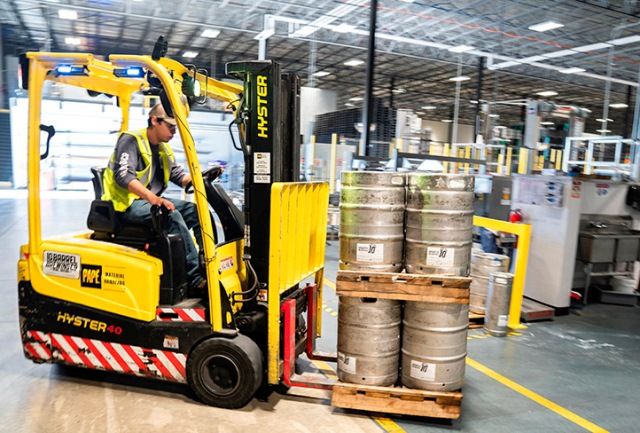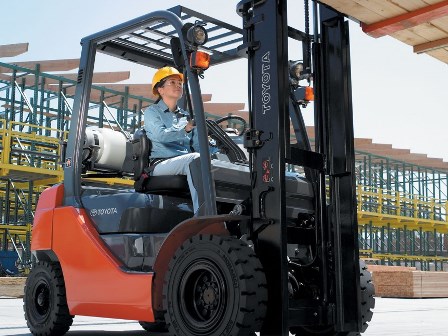Forklift Operators must be trained
An untrained operator of a forklift can be as dangerous as an unlicensed operator of a motor vehicle.
Regulations require that the employer ensure that a forklift operator is competent to operate the forklift he or she is assigned to use.
The employer must document operator training and an evaluation of the operator’s performance while using the forklift.

Forklift Training
Training has three parts:
- Formal instruction such as a lecture, discussion, interactive computer learning, videotape, and or written material (can be taken anywhere).
- Practical training which includes hands-on demonstrations by the trainer and exercises by the trainee (on the model of forklift the worker will use); and
- An evaluation of the effectiveness of the training by observing the operator’s performance while doing actual work using the forklift. This evaluation must be repeated at least once every three years (must be at the workplace).
Refresher training must be given if the operator has been involved in an accident, near miss or unsafe operations.
Also, if an operator is assigned to a new type of forklift or if workplace conditions change that could affect safety, then refresher training is required.
Forklift driving training
Driving a forklift is different than driving a car – Standard Operating Procedure for Forklift Operation
In a car or truck the front wheels steer the vehicle. A forklift has the steering wheels in the rear. The rear end of the forklift swings in a circle around the front wheels that support most of the load.
The operator must check that there is room for the rear end to swing when making turns. This clearance can be maintained in your workplace by permanently marking aisles with painted lines or arranging storage racks in a way that creates obvious aisles for travel.
However, these marked aisles will only be effective if you keep them clear of stored materials, which can gradually encroach as space is needed.
A forklift is not as responsive as a car when turning the steering wheel.
Rear steering makes it difficult to stop a forklift quickly or swerve and still maintain control. It is important, then not to drive a forklift fast or round corners quickly.
Driving with the load downhill can result in loss of the load and control of the forklift.
If you drive a forklift on an incline, you must keep the load on the uphill side. Otherwise, you may have no weight on the wheels that steer and can lose control! The load could also fall off or cause the forklift to tip.

Forklift Safety Procedures
Forklifts are extremely useful workplace vehicles, as long as they are used safely and appropriately by operators who are appropriately trained and competent to use them.

Forklift SOP
This Standard Operating Procedure (SOP) was written to incorporate all comprehensive training activities into one system.
